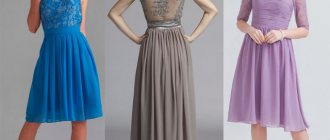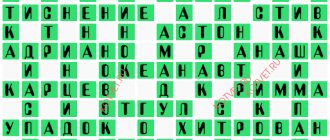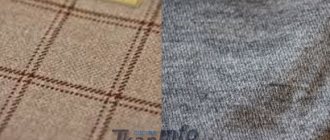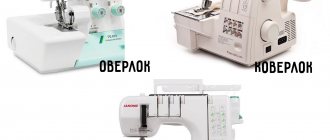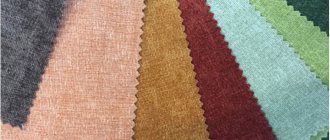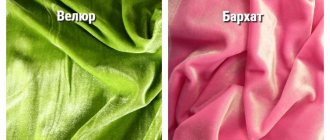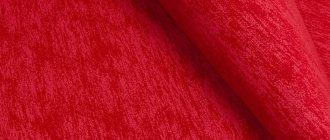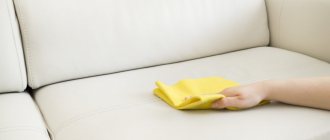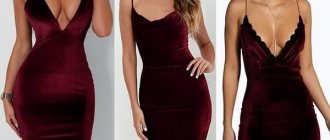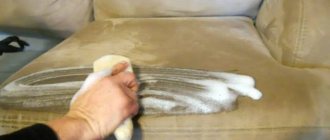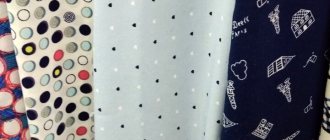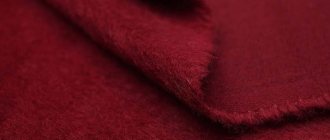The roots of velvet are lost in China. It is known for certain that in the 13th century, along the Silk Road, Arabs brought this expensive fabric to Italy, from where it spread throughout Europe. A little later, velor appeared as an alternative to royal fabric, similar in appearance, but more affordable. If they are so similar, how can you determine the difference between velor and velvet?
Previously, the high cost of the latter was explained by the complexity of production (the fabric was woven from 4 threads, and the fifth played the role of pile), the use of natural silk and expensive dyes. Alternative fabric was made from cheaper raw materials, and the weaving method became simpler, but the quality was worse. Modern technologies have made it possible to significantly improve its properties, avoiding an increase in price.
It turns out that velor is a universal type of velvet, at a lower price.
What is the difference between velor and velvet?
Velor and velvet are essentially related materials, similar in appearance and characteristics, but there are significant differences. To make the difference clear, it is better to refer to the comparative table, which clearly shows the difference between velvet and velor.
| Characteristics | Velvet | Velours |
| Fabric characteristics | dense, fleecy, drapes easily, wrinkles easily, | soft, fleecy, drapes easily, hardly wrinkles |
| compound | only natural fibers (natural silk or wool, sometimes cotton) | natural and synthetic fibers (wool, cotton, polyester, elastane, etc.) |
| elasticity | No | can be elastic |
| does it allow air to pass through or not? | Yes | Yes |
| absorbs moisture or not | Yes | Yes |
| Does it fade or not? | Yes | Cheaper fabrics may fade |
| strength | Yes | Yes |
| pile length | short pile | long pile |
| Features of working with fabric | Requires certain skills and experience to work with it | Slightly easier to process than velvet, with the exception of elastic types |
| care features | requires careful care: hand wash at low temperature, do not use chlorine-containing or aggressive products, do not iron, can be treated with steam from the reverse side, holding the product suspended, in case of serious contamination, contact dry cleaning | easier to care for than velvet: machine washable (delicate cycle) at temperatures up to 40 degrees, no ironing required, can be steamed if necessary |
| what is it used for | items of clothing, evening wear, accessories, bags, shoes, curtains, furniture upholstery, decorative pillows, theater costumes and scenery | items of adult, children's and home clothing, evening wear, outerwear, hats, shoes, bags, accessories, furniture upholstery, car seat upholstery, curtains, bedspreads, decorative pillows, theater costumes and scenery |
| price | high | a little cheaper than velvet |
Comparing velvet and velor, it begins to become clear what the difference is. Whatever the purpose of the velvet material, it will be made using the same method with minor differences, and velor fabrics can be divided by area of application:
- Dress; Curtain; Furniture; Automotive.
All of these varieties will differ significantly from each other, making comparisons difficult. For the same reason, it is impossible to definitively answer which is cheaper.
In this case, it is fair to compare dress velor and classic velvet, the main differences of which are the composition of the fabric, the methods of weaving the threads and the price.
Both materials are fleecy and look beautiful, but it is sometimes very difficult to understand by appearance how velvet differs from velor.
Due to the unique properties of corduroy, it is widely used in sewing textile products. In most cases, clothing and hats are made from this material, and less commonly, shoes and bags. Corduroy fabric is a cotton material with longitudinal ribs on the front side and thick pile. Corduroy is a type of cord, but with narrow ribs. Its texture is soft and thin, corduroy resembles velvet.
Details
Fabric type velor
Quite a lot of velor fabrics are produced, which differ in the type of threads, fibers, appearance, production method, and properties.
Cotton
This material is natural because it contains only cotton fiber. It may contain some artificial threads to improve the properties. Most often, additives are found in knitted velor. This fabric is soft and dense, breathable and hygienic.
REFERENCE! It is great for sewing children's clothes.
Woolen
Made from wool fiber or blended. In this case, they use cloth yarn, which has a thick and low pile. It is not combed out with combs, so it remains fluffy, which is what woolen fabric needs. An example of such fabric is felt and drape. Velor is used for hats and outerwear.
Drape velor
To get it, you will need wool from merino sheep. The resulting fabric is durable and thin, it is classified as the highest quality class. Fibers are paid using the satin method.
Leather or natural
They are made from various types of leather that have flaws on the front side. Natural velor is used for the production of bags and shoes.
Synthetic
Made from artificial threads of polyester, elastane, lycra in various combinations. Has good performance properties.
According to the method of weaving threads
- Velor on knitwear is elastic, wear-resistant and has excellent stretch.
- Weaving production with satin or twill weave. Using this method, the most expensive and luxurious drape velor is produced.
- Moire - has piles of different orientations and lengths, which are folded into a pattern.
REFERENCE! It becomes noticeable when the lighting changes.
- Jacquard - made by joining threads of the same type and adding silk or lurex. It is a type of furniture upholstery material.
Types of paintings
Velor jersey
Fabrics with a knitted base and a fleecy surface are represented by a large group. They differ from each other in two ways:
- some of them are made by weaving fibers and threads;
- for others, loops of different shapes are connected.
Due to the wide variety of raw materials used, a large number of materials can be obtained, such as corduroy, plush, faux fur.
Dresses, tracksuits, and trousers are made from this material.
Leather velor
Animal leather is treated with chrome compounds, then it is sanded on both sides and is also called velor. Externally, it is similar to nubuck and suede. But this is still a separate category, which is used for the production of gloves, shoe uppers, jackets and furniture upholstery.
Fur
When making fur velor, a special grinding method is used, which increases the heat-shielding properties and adds beauty to the surface.
REFERENCE! This material is found in fleecy products, for example, in sheepskin coats. Jackets, gloves, hats and warm clothing are made from it.
Velor thread
In addition to fabrics on a knitted or woven base, velor threads are also made. The basis is a single-twist thread, which is why they are called reinforced. After this, villi are created on it, which are located perpendicularly. These threads are used in home handicrafts - for knitting, embroidery, fringe, cords.
Classification by color
Velor fibers are dyed in one of the following ways or produced from ready-made threads according to color.
- Printed (plain-dyed) - made by dyeing ready-made fabric or thread. Looks elegant.
- Printed with pattern and print. The design is applied to the entire surface of the fabric using stencils or cliches. Looks beautiful and elegant.
By appearance
- Smooth, having a uniform fleecy front side. The location of the pile is clear, upward from the base.
- Shaped, having an uneven surface, smoothed in some places.
- Crash with dense pile and a visual memory effect. Made from mixed synthetic, natural, artificial fibers, for example, cotton, elastane, viscose, polyester.
- Pleated or corrugated - has small folds along the fabric. Made from a mixture of synthetic fibers viscose, polyamide, polyester in approximately equal parts, adding a little elastane. Often used for women's skirts, dresses, tunics.
- Embossed, which is decorated with figuratively laid pile that forms ornaments and patterns.
Features of the material
Quite often the fabric is used when sewing clothes and other textiles due to its advantages:
- abrasion resistance - the material is wear-resistant and quite durable;
- strength - the fabric does not deform and does not stretch;
- softness - both the front and back sides are very pleasant to the touch;
- the fabric actually does not wrinkle - if the item is washed and dried correctly, it will be easy to avoid the need to iron it;
- good thermal conductivity and density - the fabric perfectly retains heat and ideally protects against cold gusts of wind.
What is the difference between corduroy, velor and velvet?
Many people often confuse velor, corduroy and velvet, but these are three different types of fabrics. They are made from different raw materials. Velvet is a material with cut pile, the basis of the fabric is silk threads. The fabric is obtained thanks to a special weaving of threads - the upper base is formed by four threads in pairs, and the fifth thread is a pile. Velvet with a high pile (about 8 mm) is called plush. Velvet is used for upholstery of sofas, tailoring, carnival costumes and curtains.
Velvet
Velor has a longer pile than velvet. This natural pure wool material made from brushed fabric is obtained as a result of processing the felt. The pile in velor can be smooth, embossed or packaged. The pile is located vertically on the canvas, in the form of a pattern, embossed, etc.
Velor is considered a furniture fabric, as it is often used for sofas, ottomans, and soft corners. For these purposes, velor of complex shapes is used, which combines wool, cotton and chemical fibers. “Looped” velor is a stretchy knitted material that is used in tailoring.
Velor fabric
Visually, velvet and velor are quite similar, however, they differ in the composition of the raw materials. In most cases, velvet is made from silk, and velor is made from cotton and wool. Velor can be artificial (synthetic). Furniture fabric is called velor. Velor is softer to the touch than velvet.
Corduroy (luxury) is made from cotton fabric using pile weaving. In most cases, the material is used for sewing clothes, summer shoes and bags. There are three types of corduroy: cord, shaped and ribbed. The first type of fabric has a long pile and wide ribs (about 5 mm). The packaged type is a canvas that combines a smooth and brushed surface in the form of patterns. Rib is a type of corduroy with narrow ribs (2-3 mm) and low pile.
Velvet luxury
Kinds
Depending on the appearance and type of pile, corduroy fabric can be:
- Rib is a universal material for making clothes: skirts, jackets, trousers and jackets. Short pile forms small strips 2-3 mm wide. Valued for its softness and lightness.
- Microvelvet is distinguished by a narrow rib of 1-1.5 mm and wear resistance. Clothes and accessories are made from soft-pile fabric, while hard-pile fabric is used for furniture upholstery and covers.
- Shaped, in which the pile on the front side is cut so as to create a pattern or ornament similar to jacquard. This corduroy is used for sewing clothes and home textiles.
- Velveton is a fabric for sportswear. It is dense with thick, velvety pile.
- The cord has a long pile that forms scars of 5 mm. In production, weft threads are used that are denser than warp threads. This heavy and rough material is in demand in furniture production, in the manufacture of bags and outerwear.
- Velvet stretch has elastic properties. Suitable for tight-fitting and sportswear.
- Luxury is a furniture fabric. It has increased resistance to mechanical and other influences.
- Corduroy diagonal has not a vertical, but a diagonal arrangement of scars. Suitable for decorative finishing.
By purpose, the fabric is classified as follows:
- Costume and dress
- Furniture
- Curtain
Corduroy material also differs in pattern, which can be in the form of cells, stripes, lattice and herringbone.
How to care for corduroy?
The fabric will not lose its properties with proper care, which will require care. Corduroy items should not be washed in the same drum with wool and other items that can release fluff and threads. Such debris will accumulate between the pile, cleaning it will be problematic, and the item will look unkempt and worn. Also, due to the lint, it is difficult to rinse out granular powder, so you should stick to liquid laundry detergents. It is recommended to turn corduroy clothes inside out before putting them in the drum.
Tip It’s not a good idea to put slippers, a jacket or a velor cap in the washing machine. Most likely, you can get by with a clothes brush. If heavily soiled, you can contact the dry cleaner.
The following techniques will help to refresh corduroy, be it clothing or upholstery:
- You can remove dust by using wide adhesive tape: alternately strips of adhesive tape are glued to the fabric and peeled off along with the dust;
- A dry or wet clothes brush is no less effective;
- heavily soiled fabric should be wiped with a soapy sponge, and then again with a dry sponge.
Care
To ensure that the texture of the material does not collapse and the attractive appearance of the product lasts longer, you need to properly care for the fabric.
- It is recommended to clean clothes regularly with a soft brush.
- A weak solution of vinegar will refresh shiny areas. After processing, the pile should be combed.
- Wash in warm water. First, clean the item from dust and turn it inside out.
- When using the machine, set to delicate wash and heat 30°C.
It is not recommended to twist corduroy products and squeeze them in a drum.
- Dry flat on a flat surface.
- It is important that the clothes do not dry out. This spoils the visual appeal and structure of the fabric.
- Iron corduroy in a vertical and horizontal position. In the first case, the item is suspended and steamed with a hot iron, passing it over the surface, without touching. Regular ironing is carried out on the ironing board from the wrong side, laying a cotton iron, and setting the heating of the iron to the middle position.
- Ironing is successfully replaced by steaming.
- The fabric should not be rubbed or washed.
- When wearing, avoid rubbing the fleecy surface against external objects.
- If stains or heavy soiling appear, items should be dry cleaned.
It happens that corduroy loses its appearance and needs to be restored. To renew things, prepare a solution by mixing 5 liters of water with 1 tbsp. l. ammonia. Clothes cleaned of dust are immersed in the liquid for 20-30 minutes. After this, wash with soapy water. Before drying, pat the product dry with a towel. You can learn more about how to wash and care for corduroy by following the link.
Cons of corduroy
Some housewives do not risk purchasing corduroy items because:
- the material is difficult to care for;
- Products made from cotton corduroy shrink after washing;
- corduroy, made with the addition of synthetic fibers, is well electrified and also attracts dust and animal hair.
Products made from corduroy always visually look expensive and beautiful. Anyone can buy something made from this material, however, they must be prepared to provide it with proper care.
Velor and velvet are considered related materials. They have a similar fleecy surface, soft and shiny. Despite their external similarities, they also have differences.
Advantages and disadvantages
The composition and characteristics of the fabric form the following characteristics:
- Strength and tensile strength.
- Form stability.
- Heat-saving properties.
- Almost does not wrinkle and does not get dirty.
- Breathable and hygroscopic.
- Attractive and original in appearance.
The disadvantages include the ability of the velvety, embossed surface to pick up dust and small debris, for example, scraps of thread. Cotton corduroy shrinks when washed, while synthetic corduroy becomes electrified.
What is velor
Velor (Latin villosus, French velours) is a velvety fabric with long, thick pile on the outside. Translated it means “shaggy, hairy.” It is obtained from cloth spinning yarn. The fabric contains wool or cotton, as well as additives of synthetic threads. Modern velor textiles most often consist of polyester and elastane fibers.
The structure of the pile can be smooth, jacquard, marble, embossed or patterned, as in the photo. The material is made plain and printed.
Divided into two categories of fabric:
- Split. It is made from wool yarn and has a long pile.
- Looped. It is a knitted fabric intended for sewing clothes.
- Warm and comfortable.
- Lets air through.
- Pleasant to the touch.
- Deprived of stretch properties.
- Doesn't wrinkle.
Disadvantages: requires constant care, gets dirty easily, and stains are difficult to remove. During use, the pile breaks and wears off.
General information
Velor fabric description
The concept of velor includes a number of pile materials. It has a dense structure and several types of base. Consumers appreciate it for its rich, sophisticated appearance and practicality. As a result, velor can be described as a fabric with a fleecy surface, soft and velvety.
Velor consists of natural and synthetic fibers - wool, silk, cotton, viscose, polyester, elastane, lycra.
REFERENCE! Synthetic threads give the material durability and strength, and stretch increases elasticity.
Velor is produced using base-pile technology, which has two types:
- Single-sheet - a rod is used for it, inserted under the threads of the pile being formed. With this, loops are formed. After fixing them, the rod must be removed. If you do not cut the loops, there will be a loop pile. If you cut the loops, the pile will be split.
- Double-layer, for which two main threads are used simultaneously. They form two fabrics that are connected to each other by a pile base running in a zigzag pattern. The layer of pile is cut on a machine using knives. In this way, fabrics made of five threads are obtained.
Velor fabric pros and cons
The advantages of velor include:
- Attractive appearance.
- Soft and pleasant to the touch.
- Good thermal insulation, which is achieved using dense pile and an air layer that retains heat.
- Preservation of properties during operation. Velor wrinkles little, does not shrink or stretch.
- Strength, which is achieved using high density fabric.
- Good air conductivity, which all natural fabrics have.
- No allergic reactions upon contact with the material.
- Uniform and durable color.
- Easy to care for.
The disadvantages include:
- Accumulation of dust, hair, animal fur, thread fragments, etc.
- Creases in the pile become noticeable at a certain angle.
- Poor abrasion resistance.
What is velvet
Velvet (German: Barchent) is a royal fabric for nobles and rich people. It was worn by ladies and gentlemen at courts, and palaces and carriages were decorated with velvet. Gradually its elitism decreased, but its luxurious appearance remained.
The name “velvet” translates as “fabric with fleece.”
The material is distinguished by its density and wear resistance. It is obtained by weaving 5 threads of cotton, wool or silk fiber. Four of them form the base, and the fifth forms the pile itself. Therefore, its structure is split, vertical.
- Noblely shines and shimmers.
- Draped.
- It looks rich.
- Doesn't stretch.
- Has heat preservation properties.
- Nice and comfortable to wear.
- Does not prick or irritate the skin.
- Long lasting.
Application
The material is popular for sewing sophisticated dresses, elegant suits, turtlenecks, blazers, bodysuits and wide trousers. The clothes look rich and are often used for evening outings and special occasions. Velvet is used to decorate shoes, boots and sandals. They make headbands and accessories. Various haberdashery items are made from it: bags, clutches, wallets, purses.
Velvet fabric is used for upholstery of upholstered furniture, for making curtains and decorative items. It transforms the room and gives comfort.
Main Differences
And yet, what is the difference between velvet and velor. Velor is usually wool or cotton, but it can also be artificial. Velvet also has the addition of silk, in the classic form it is natural, the second is often found in synthetic form.
The structure of velor is a solid pile, and velvet is obtained from a split pile using the method of weaving threads. It is natural and dense. At the same time, velor is softer, and its pile is longer and less dense in structure. For its naturalness, velvet is valued more than velor and is considered more prestigious.
The buyer will not always be able to tell the difference between these fabrics. It is not for nothing that certain types of velvet are subtypes of velor.
